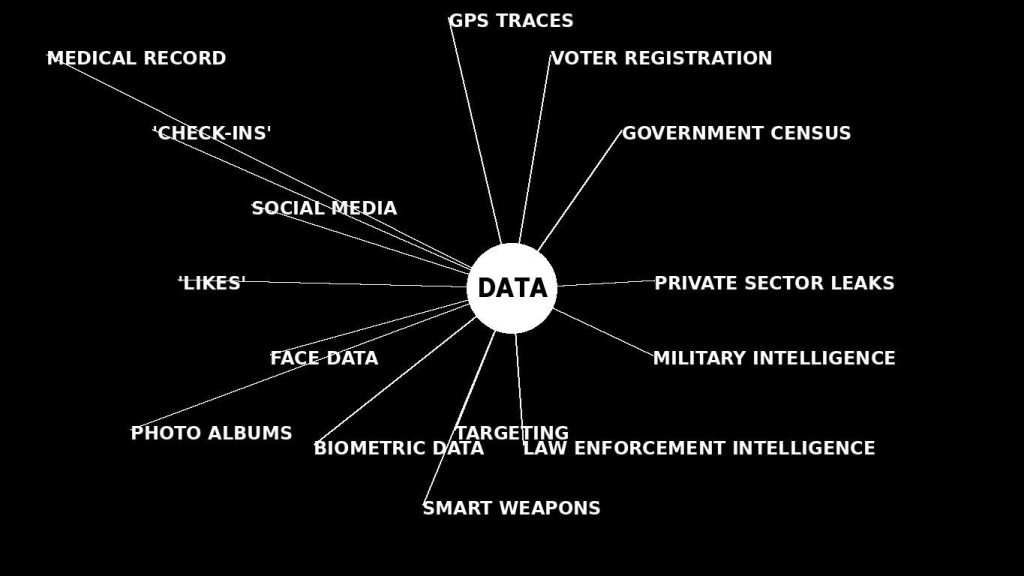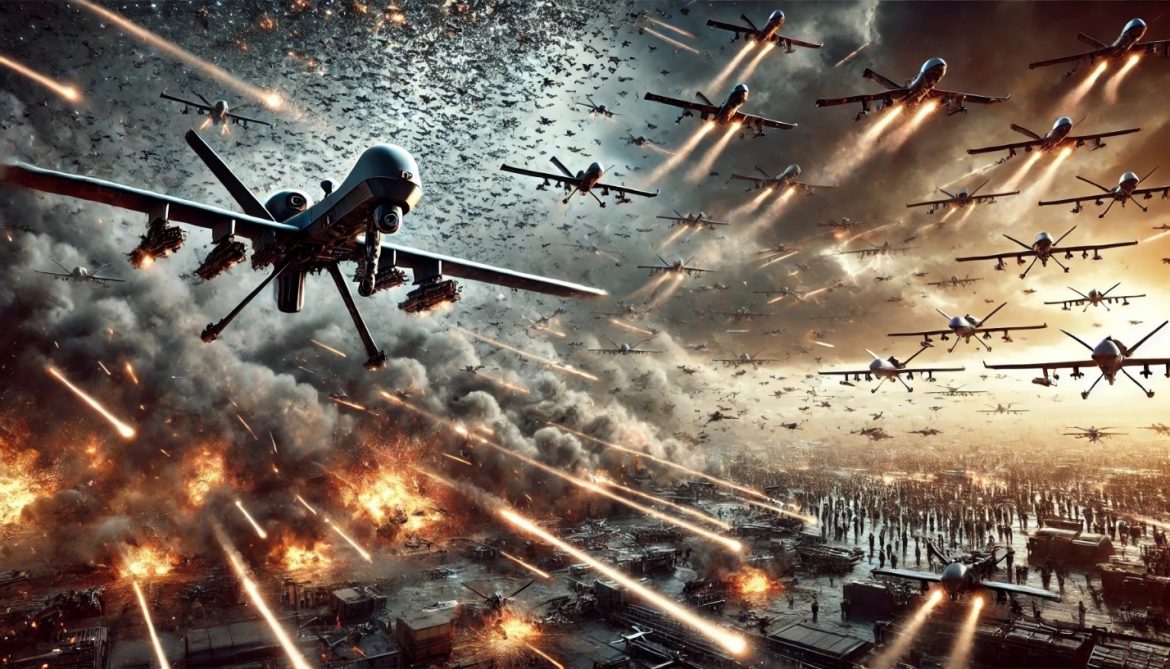The description in Revelation 9:7-10 vividly portrays locust-like creatures with attributes that are strange and extraordinary, especially when viewed through the lens of the ancient world. The passage describes beings that look like locusts but have features like crowns, human faces, lion-like teeth, and tails that sting like scorpions. Their noise is likened to chariots rushing into battle, and they inflict torment on humans for five months. Comparing this description to modern drone technology raises interesting parallels, suggesting that such advanced devices might align with the imagery John recorded.
Analysis of the Text Compared to Drone Technology
- Physical Characteristics
- The locusts are described as resembling “horses prepared for battle”—possibly analogous to the structured, aerodynamic design of drones, which are often built for speed and precision in military operations.
- The “crowns like gold” could refer to the metallic, reflective surfaces of drones.
- Their “faces like the faces of men” might evoke the human-like control or observation systems embedded in drones, particularly cameras or AI systems designed to mimic human decision-making.
- Sound and Movement
- The “sound of their wings as the sound of chariots of many horses” aligns closely with the buzzing noise of drone propellers, especially in swarms.
- The locusts’ ability to move swiftly and purposefully mirrors the agile maneuverability of drones, which can hover, dart, and fly with precision.
- Weaponry and Power
- Their “tails like scorpions with stings” might correspond to drones equipped with weaponized systems, such as missiles or payloads that deliver precise strikes.
- The phrase “to hurt men for five months” could suggest sustained campaigns of drone activity, which modern technology makes feasible with long operational durations.
- Historical and Technological Context
- The Apostle John, living in the 1st century, lacked a conceptual framework for advanced technologies like drones. His descriptions of locusts, scorpions, and chariots likely reflected his attempt to articulate something far beyond his understanding, using analogies drawn from his environment.
- Whether the locusts are supernatural beings, symbolic imagery, or a representation of future technology, the descriptions resonate intriguingly with today’s military drone capabilities.
‘Future of War is Drone Wars’ Joe Lonsdale:
Joe Lonsdale is a prominent figure in the technology and defense industries, notably recognized for co-founding Palantir Technologies. His work has significantly influenced data platforms for national security. Through his venture firm, 8VC, Lonsdale continues to drive innovation in AI, cybersecurity, and battlefield intelligence. In an insightful interview on the Shawn Ryan Show, Lonsdale discussed the transformative impact of drones on modern warfare.
Joe Lonsdale on Drones and Defense:
On Drone Warfare:
Lonsdale is clear about the future trajectory of warfare, asserting, “Drone warfare is becoming obviously very prevalent, absolutely critical. This is the future of warfare: lots and lots of manufactured, smart, weaponized, autonomous drones, whether they’re flying, on the water, under the water, or on land. That is the future of warfare, as far as I’m concerned.”
On Epirus and Directed Energy Weapons:
Discussing his involvement with Epirus, Lonsdale said, “You founded Epirus, yeah, and Epirus is a directed energy, basically a directed EMP weapon, and it seems to me from the reading I’ve done on it that it’s defense against drones. Epirus is a really important company, and I’m proud to be a co-founder there.” He detailed the strategic rationale behind Epirus, “We decided to start Epirus first because the future of warfare seemed very clearly to be heading towards drone warfare, and it’s just not sustainable to fire missiles at drones. You’re spending a million dollars or $100,000 to shoot down something that costs a lot less than that, so you need a one-to-many effect; you need to be able to shoot cones of energy.”
He also shared technological insights, “The thing we realized with the help of some really smart people like Bo and Nathan is that the chips in Silicon Valley had gotten so powerful and fast that they can help you control power on very small time scales, allowing you to hit the emitter and fire much farther than anyone else was doing.”
On the capabilities of Epirus’s technology, Lonsdale mentioned, “You’re now shooting things down from miles away. It’s not just the little tiny, like DJI drones or whatever they’re called; these are the big things that Iran’s making for Russia. We could take down quite a far distance away.” He concluded with an update on deployment, “Leonitis is the first version of the product being deployed with S Comm, and it’s actually going out in the next month, which is great. The tests have shown you could handle about 100 drones at a time.”
Take a deeper dive into drone warfare in the article Joe Lonsdale and Bernard Hudson on the Future of Warfare: The Drone Revolution, Joe Lonsdale co-founder Palantir Technologies and Bernard Hudson Who Ran Counterterrorism at CIA.
Drones in Modern Warfare:
Lonsdale emphasized that drones are set to dominate future military engagements due to their strategic advantages:
- Strategic Use: Drones offer a cost-effective and versatile approach to both reconnaissance and combat, adaptable across various environments.
- Technological Edge: Epirus’s innovations in drone defense highlight how new chip technologies can revolutionize electronic warfare, providing a significant advantage in controlling and neutralizing drone threats.
Epirus and Electronic Warfare:
- Innovation in Defense: Epirus’s technology not only defends against drone attacks but can also be used offensively to disable enemy electronics, creating strategic zones where enemy tech is compromised.
Related:
- The A.I. Dilemma and The Church, Artificial Intelligence (Part 1: Section 1 & 2) How advanced is AI? Could it be the image of the beast?
- The A.I. Dilemma and The Church, Artificial Intelligence (Part 2) AI and 40% of Jobs Lost, Cyborgs, and Making Sense of the Chaos
- The A.I. Dilemma and The Church, Artificial Intelligence (Part 3) AI robots in our image: Can they really be harmless? Why did the AI creator panic and warn world leaders?
- The A.I. Dilemma and The Church, Artificial Intelligence (Part 4) Exchanging the Glory of God for the Image and Last Days Prophecy
- ‘NOT BELIEVABLE’: DOD, WH take heat over mystery drone response
What Were These “Drones” (Locusts) Doing to the People of the Earth?
The locusts in Revelation 9:3-6 are described as inflicting torment on humans in a specific and terrifying way:
- Targeting Specific People
- The locusts were instructed not to harm vegetation, which is their typical prey, but only “those men which have not the seal of God in their foreheads” (Revelation 9:4). This indicates a deliberate, targeted attack against individuals who were not marked as God’s own.
- Inflicting Torment Without Death
- The locusts were given power to “torment them for five months,” with the torment likened to the painful sting of a scorpion (Revelation 9:5).
- Death is described as fleeing from those afflicted, suggesting an intense psychological and physical suffering that did not lead to escape or relief.
- Driving People to Despair
- During their torment, “men shall seek death, and shall not find it; and shall desire to die, and death shall flee from them” (Revelation 9:6). This highlights the unbearable nature of the suffering inflicted by these creatures.
If these locusts are compared to drones, their torment could symbolize the effects of modern warfare—where precision strikes, surveillance, or even non-lethal weapons cause significant psychological and physical distress. The ability of drones to target specific groups or individuals mirrors the locusts’ selective harm.
 Drone technology is able to draw from all these and potentially thousands
Drone technology is able to draw from all these and potentially thousands
of data sources about you to track your movements.
Related:
- The A.I. Dilemma and the Church (Part 5) | “A-Eye” is Watching! Is Big Tech, Big Brother?
- The A.I. Dilemma and the Church (Part 6) Deconstruction of Capitalisms, the Rise of a new Economy, and the Beast Economy
- The A.I. Dilemma and the Church (Part 7) Are we in George Orwell’s “1984” and the Importance of Nurturing Authentic Human Relationships.
- The A.I. Dilemma and the Church (Part 8) Know Your Enemy
- The A.I. Dilemma and the Church (Part 9) Mount Carmel – God vs. Baal
- Mystery Aircraft Over New Jersey Might Not Be Drones
The Mark on the Forehead: Could It Be Facial Recognition?
The “seal of God” in Revelation, placed on the foreheads of His servants, protects them from the torment inflicted by the locusts. Modern parallels might be drawn between this and facial recognition technology:
- Recognition of Identity
- Facial recognition systems analyze unique features of an individual’s face, effectively creating a digital “mark” or identifier. If John’s vision reflects something akin to this, the “seal on the forehead” could metaphorically represent being distinguishable by advanced technology.
- Targeting Specific Groups
- Drones and other systems equipped with facial recognition could easily identify and target individuals lacking a certain mark or identifier, aligning with the locusts’ mission to harm only those without the seal of God.
- Symbol of Allegiance or Exclusion
- In a broader context, the “seal” might symbolize allegiance or identification with a specific authority. This parallels how facial recognition and other technologies are used to control access, track individuals, and enforce compliance.
What Is God’s Seal That Protects His People?
The seal of God is described in the Bible as a mark of divine protection and ownership for those who belong to Him:
- Spiritual Protection
- In Revelation 7:3-4, the seal protects God’s servants from harm, signifying their identity as His people.
- The forehead, symbolizing the mind and allegiance, reflects a person’s dedication to God.
- The Holy Spirit as the Seal
- The New Testament describes the Holy Spirit as a seal for believers:
- Ephesians 1:13-14: “Ye were sealed with that holy Spirit of promise.”
- 2 Corinthians 1:22: “Who hath also sealed us, and given the earnest of the Spirit in our hearts.”
- This sealing guarantees salvation and God’s presence in the believer’s life.
- The New Testament describes the Holy Spirit as a seal for believers:
- Faithfulness to God’s Commandments
- Some interpretations associate the seal with obedience to God’s laws, especially the Sabbath (Exodus 31:13; Ezekiel 20:12).
Those sealed by God are spared from divine judgments, emphasizing the profound security of belonging to Him.
Related:
- The A.I. Dilemma & The Church (Part 10): Baal E-Masculation, ToS, Unveiling the E-Masculation Effect of Artificial Intelligence and its Profound Influence on Masculinity
- The A.I. Dilemma and the Church (Part 11) The Mind of Christ vs. The “Mind” of A.I.
- The A.I. Dilemma and the Church (Part 12) War on Jesus
- The A.I. Dilemma and the Church (Part 13) Singularity
- The A.I. Dilemma and the Church (Part 14) A.I.’s World War III
- The A.I. Dilemma and the Church (Part 15) Civil War?
- The A.I. Dilemma and the Church (Part 16) – Twisted: A.I., God, & Heaven
- The A.I. Dilemma and the Church (Part 17) – Beyond the Reset: A Dystopian Future
- President Trump Reveals “the ministry” on New Jersey Drones
Conclusion
It is reasonable to conclude that the Apostle John, living in his time and context, could have been witnessing and describing something akin to modern drones. The “locusts” he saw might represent technologies or phenomena far beyond his comprehension, articulated using the imagery of his day.
For instance, the “locusts with faces like men” could correlate to drones equipped with cameras, their “wings like chariots” to the noise of drone propellers, and their “tails like scorpions” to their weaponized capabilities. Their selective targeting, tormenting without killing, and their restraint from harming the earth’s vegetation all align intriguingly with advanced military technology.
Whether symbolic, supernatural, or technological, the locusts of Revelation 9:7-10 highlight a profound warning about judgment, human suffering, and divine protection. The parallels with modern drones offer a fresh lens for interpreting this ancient prophecy, emphasizing the enduring relevance of John’s vision for understanding the intersection of faith, technology, and the future.
Updated 01.03.25





